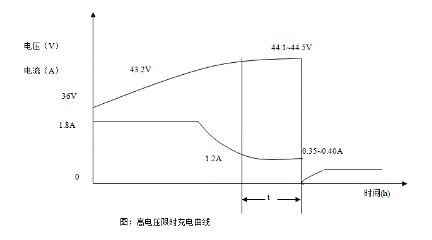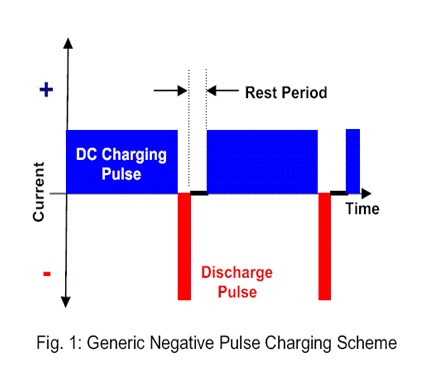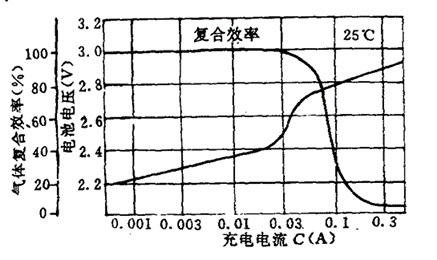Battery charging method: How to determine whether the battery is full
Time:2024-06-11
Views:54
First, several commonly used charging methods:
• Constant current voltage limiting mode
This mode is mainly applied to online UPS. Lead-acid battery charging process is divided into two stages, the first stage is a constant current process, the current value is generally set within 0.3C; The second stage is the constant voltage stage, and the voltage is set at about 13.7V (taking the 12V battery as an example). For completely empty batteries, this method generally takes more than 40 hours to fully fill the battery. The advantage of this charging method is that the circuit is simple, and the system can be connected to power supply, and there is no overcharging danger for a long period of time. The drawback is that the charging time is too long. In telecommunications and emergency lighting systems, this charging mode is basically used.
• "Constant current + equalized charge + floating charge" three-stage
Mainly used in places requiring frequent charging (such as electric bicycles)


• Constant current + timing equalized charge + floating charge "improved three-stage
This is an improved three-stage type, the purpose of which is to reduce the hidden danger of abnormal water loss and heat deformation of the battery;


• Multi-stage positive (negative) pulse type
In theory, charging with positive and negative pulses helps to reduce the phenomenon of "vulcanization" and "polarization" during the battery charging process, increase the recombination rate of positive and negative hydrogen and oxygen gases, and reduce the battery water loss. However, the specific quantified effect is still controversial in the international community. This theory first appeared in the 1960s, and it is still controversial. Although there is controversy about the effect of positive and negative pulses, it has always been acknowledged that the rational use of pulse charging has no significant adverse consequences for the battery itself.


Second, how to determine whether the battery is full
• Within the acceptable range of current and voltage of the battery, when the electric energy flowing into the battery is no longer converted into the chemical energy of the battery, so that the battery is hot, it can be considered that the battery is full, because if the battery is charged with excessive current, the battery will be seriously heated, exhaust or even burst.
• Constant current electronic loads are the most accurate and convenient way to determine the capacity (ampere-hours) of a fully charged battery. Note that the "time current integration (AH)" obtained when discharging with different discharge rates is not completely consistent, and the specific differences are shown in the technical curve table of the battery manufacturer.



Third, the causes of battery capacity decline and failure
• Insufficient charging
From the perspective of electrochemical reaction, the lack of charging is manifested as the anode and cathode plate lead sulfate can not be fully converted into spongy lead and lead dioxide, which makes the battery insufficient capacity, such as long-term insufficient charge, it will cause lead sulfate crystallization, particle increase, so that the plate vulcanization, battery quality deteriorates. |
• Overcharging
Overcharging will make the amount of oxygen produced by the anode greater than the absorption capacity of the cathode, thus increasing the internal pressure of the battery, and eventually opening the safety valve, gas overflow, resulting in a reduction of the electrolyte. In addition, overcharging will also have an impact on the active substance of the anode and cathode plate, softening the active substance, destroying the lattice interface of the positive plate, and transforming the a molecule into the b molecule, and the b molecule is irreversible. Even if recharged, the capacity cannot be restored, and the battery life is greatly shortened.
• Poor battery process failure caused by safety valve leakage, positive plate corrosion, deformation, active material falling off, softening, etc. caused by process defects in the battery production process
Fourth, how does the charger delay the capacity failure of the battery
• As much as possible 100% full battery, so that all the chemicals in the battery to participate in the charge and discharge reaction, reduce the formation of lead sulfate crystals and accumulation expansion.
• In the late charging period, it is necessary to take the necessary measures to reduce the speed of gas precipitation and gas evolution, so as to reduce the loss of battery electrolyte (referred to as water loss) If the two-stage constant current constant voltage method is used, the above two are easy to achieve, but for the application of electric bicycles, 40 hours of charging time is simply not practical. The normal charging time that people can accept must be less than 12 hours, so the three-stage or intelligent pulse type must be used to meet the requirements of the charging time. Whether it is the ordinary three-stage type or the pulse type, if the voltage battery is low in the later stage of charging, the charging is insufficient within the limited time, if the charging voltage is high, it will inevitably cause a large amount of gas precipitation near the electrode. The diagram on the next page shows gas extraction and recombination and specific data. When the precipitated hydrogen and oxygen gas cannot be combined in time to increase the pressure, the battery will exhaust water through the exhaust valve. "A reasonably designed charger should ensure that it is fully charged within a limited time, and at the same time reduce the speed and volume of gas precipitation as much as possible.
Five, multiple perspectives on pulse charging technology
• Theoretically, charging with positive and negative pulses helps to reduce the phenomenon of "vulcanization" and "polarization" during the battery charging process, increase the recombination rate of positive and negative hydrogen and oxygen gases, and reduce battery water loss.
• Reasonable use of pulse charging mode has no obvious adverse consequences on the battery itself.
• A number of domestic charger manufacturers and individuals claim that their pulse chargers can extend battery life by more than double. How many effects, I believe that a year or two later the majority of consumers will have a conclusion. There has been no consensus on the efficacy of pulse charging in the world for 40 years, and perhaps a large number of practical data in China for another two years will provide sufficient evidence.

|
Disclaimer: This article is transferred from other platforms and does not represent the views and positions of this site. If there is any infringement or objection, please contact us to delete it. thank you! |











